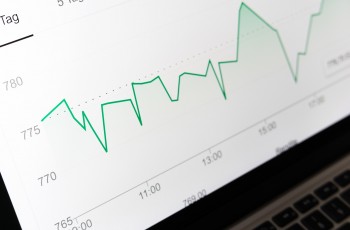Would you like to know the future of your business?
What will your customers want?
Do you really want it?
Ok, we are not talking about witchcraft or tarot reading. In fact, we are talking about technology, and it´s something you will take too much benefit from.
Predictive Analytics is the branch of analytics that can help you make predictions about future events. It is done through the use of data, statistical algorithms and machine learning techniques.
In this article, we will explain to you what this analysis is about and how it can help you to manage your business.
Let´s go ahead.
How does it work?
Basically, this technology allows you to save information about your customers through several data mining. Is a predictive modelling and analytical technique that puts together information technology and business process to make predictions. This material can help you identify risks or opportunities in long-term situations.
This model captures the relationship marketing tracking showing you what things work and which ones don´t deal with your customers. If you apply this strategy successfully, you can interpret big data for your own benefit.
Predictive analytic builds information through structure and unstructured data. This technology builds profiles based on age, gender, marital status, income, and sales in structure data. Unstructured data is about textual information such as social media content or other textual information that can offer valuable data.
With predictive analytics, you can make accurate decisions about your organizations without wrong assumptions based on instinct.
Why should you use predictive analytics?
More and more organizations are using predictive analytics because it helps them to uncover new opportunities. Among its uses, you can find:
Optimize marketing campaigns:
These analytics can predict what the customer responses or purchases are going to be. It also recommends loyal customers to new products so they can go back to buy more products.
Improve operations:
With predictive models is easier to forecast and manage resources. It enables organizations to make them work more efficiently. Hotels use this technology to predict the approximate number of guests for a night to increase occupancy and revenue.
Risk Reduction:
Have you paid your credit?
Well, predictive analytics can track a new customer’s credit score and let you know how trusty he or she is. Another risk-related use is for insurance claims and collections.
Fraud Detection:
Yes, these analytics can even prevent criminal behaviours.
As cybersecurity keeps evolving, high-performance behavioural analytics can examine all the patterns on a network to detect abnormalities that could indicate a trap and advanced persistent threats.
Start Using Predictive Analytics
Step One:
Predictive Analytics can help you solve problems; you have to stipulate which one you want to solve. Then ask yourself these important questions:
- What do you want to know about the future based on past experiences?
- What do you want to understand about your customers?
- What actions can you do to solve the problem?
Step Two:
You need to complete a lot of data from your customers, get track of transactional systems, data collected by sensors, call center notes, weblogs, leads and every place to know how your customers behave.
Find somebody who knows about data and understands the problem of your company.
You have to carefully define your target audience for this process, which is one of the most time-consuming parts.
Step Three:
Your predictive model has begun!
Although there is more easy-to-use software for analytics nowadays, you will still need a professional who knows about data analysis and can keep refining your model to come up with the best performer.
Information Technology (IT) is another aspect you have to cover. A specialist in this area will help you deploy your models; this means putting the models to work on your chosen date.
Now you will get your results!
Final Step:
Build a team that can help you improve your model.
It would help if you had someone who understands the business problem, and this person must know how to prepare data for analysis.
As we said before, an Information Technology expert is needed for model building and deployment and an executive who can sponsor your analytic studies.
Predictive Analytic Techniques
Predictive Analytics uses old results to train a new technique to predict values from new data. If you want to calculate revenue, these models will provide results in predictions based on a set of input variables.
Predictive Analytics differs from descriptive analytics because the descriptive model can help you understand what happened with key relationships in your business and why this happened.
There are two predictive techniques:
Classification:
This one is used for predicting class membership. If you want to classify whether a customer is likely to leave or has bad credit risk, this model is pretty useful for this. These models are in the form of 0 or 1. If the result is one, this is the result you are targeting.
Regression:
This one is used for predicting a number – for example, if you would like to know how much revenue a specific customer will generate over the next year.
Predictive Analysis Models
The three most used predictive analysis models are.
Decision trees:
These are classification models that get results from analyzing categories of input variables. With this, you can understand the path of decisions a customer makes.
This model looks like a tree, with each branch representing a choice made by the customer. Each leaf represents a classification or decision. With this model, you can check the data and find one option that separates the data into logical groups.
Decision trees are popular because they are easy to understand. You can handle missing values and use them for preliminary variable selection.
Linear Regression:
Linear regression is most used in statistics. It helps you estimate relationships among variables.
Linear regression finds key patterns in large data sets and is used to determine how many specific characteristics, like price, could influence an asset’s movement.
With the regression model, one independent variable is used to explain or predict an outcome. This factor will be called Y. You can use it to predict two or more independent variables.
Logistic regression can predict unknown variables based on the known value of other variables. A response can have several levels such as 1, 2 or 3, hot or cold.
Neural Networks:
The neural networks model is one of the most sophisticated techniques, and you can model extremely complex relationships with this one.
This model can handle nonlinear relationships in data – most of it comes in this modality – and can help you confirm a decision based on more simple models such as decision trees and regression. It uses AL to process the “model” parameters graphically.
When you don’t have any mathematical formula, this model is the one you must choose because, in this case, prediction is more important than explanation.
Neural networks were first developed by researchers who were trying to emulate the neurophysiology of the human brain.
What Companies use Predictive Analytics?
Many companies use predictive analytics to optimize operations, increase revenue, and reduce risks among the industries we use.
Banking:
For a long time, banks have adopted predictive analytics to detect and reduce fraud, measure credit risk, retain customers and maximize cross-sell/up-sell opportunities.
Retail:
Retailers use predictive analytics for merchandise planning and price optimization to analyze how effective the promotional events are and determine the best offers for consumers.
Oil and Gas:
The energy industry has embraced predictive analytics to predict equipment failures, mitigate safety risks, and improve all the fabrics’ performance.
Government and Public Authorities:
Nowadays, governments use predictive analytics to improve service and performance. They can detect fraud and understand the behaviour of their citizens.
One of the essential uses of this technology is to enhance cybersecurity.
Health Insurance:
With predictive analytics, the health insurance industry has been able to identify patients with the most risk of chronic disease.
Manufacturing:
Manufacturers need to identify factors that lead to reduce quality and production failures. Companies like Lenovo have used predictive analytics to understand warranty claims, which has reduced the warranty costs to 15 percent.
Conclusion
Good marketing is done through 50 percent of strategy and 50 percent of knowledge. You cant make decisions randomly that won’t help your business grow.
Technology is constantly evolving to help us take the best steps through our entrepreneurship journey and business; it has grown that much that today with predictive analytics, can help you figure out what the future might bring for your business.
It is crucial to have people on your team who know how to handle this kind of analytics and knowledge to manage the data and give you exact solutions for your problems.
Technology is here to stay, and the best thing you can do is know how to take advantage of it to get you to a better place.
Did you know about predictive analytics?
How do you use it in your business?
Let us know in the comments, and we´ll see you soon on another article!
About the author:
We are Codedesign – a multi cultural, award-winning digital marketing agency . We define as a search-led, innovative digital marketing agency specializing in SEO, PPC, social media ads, content marketing and data analytics. We are trusted with growing the online presence of companies on a local, national and international scale. We work very closely with our clients’ team to understand how best to meet their needs, utilizing the diverse talent within our team to create highly innovative marketing campaigns.





